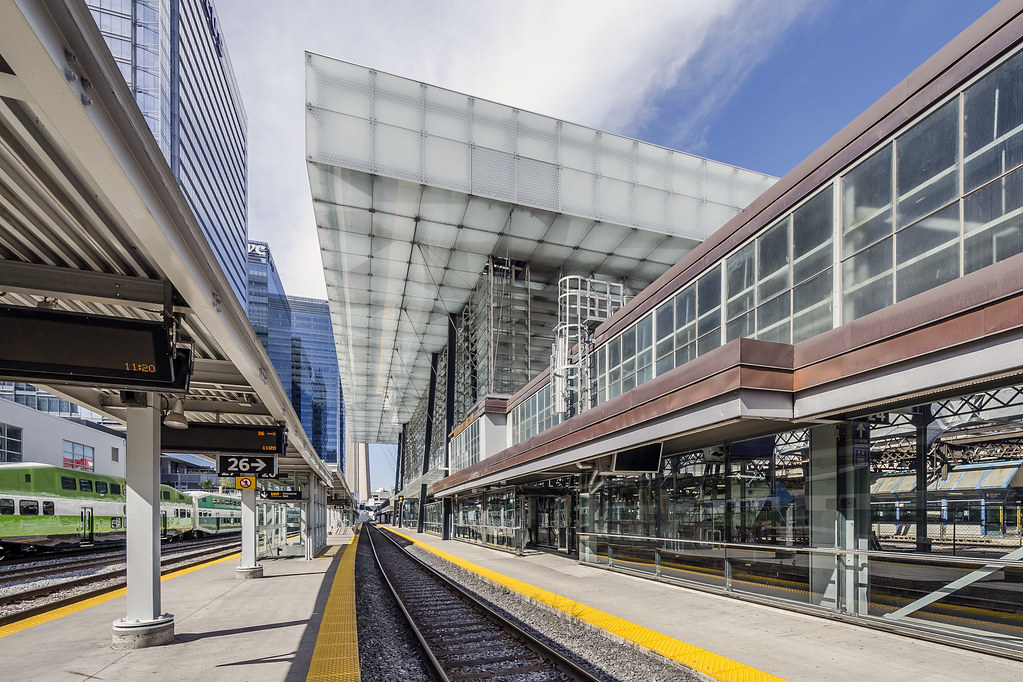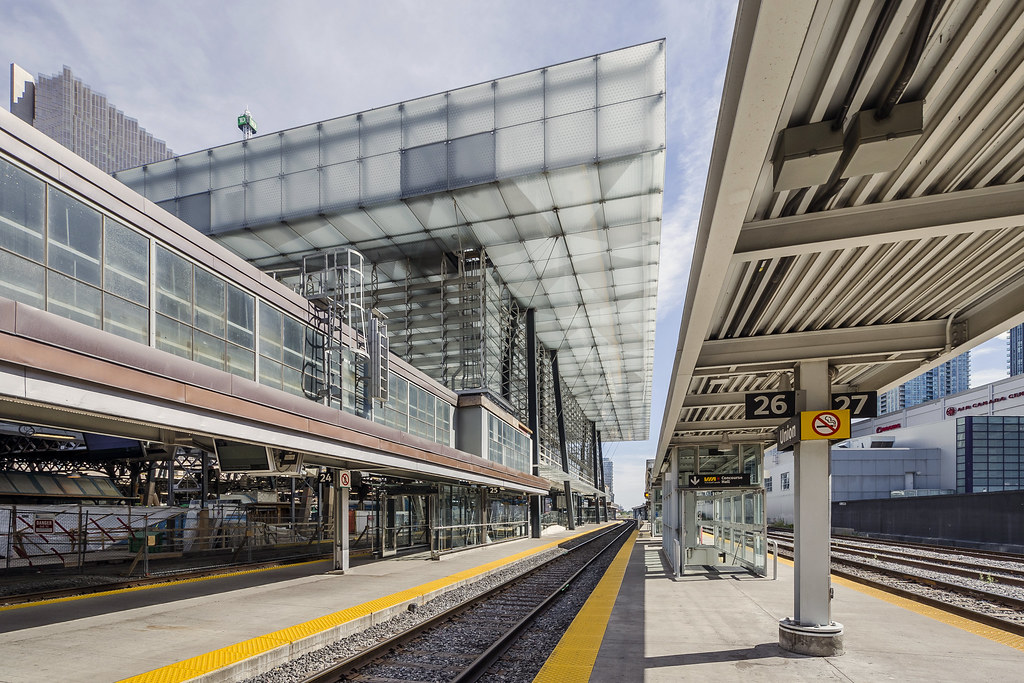rbt
Senior Member
These are from 2014. I don't want to say I told you so, but I told you so.
I must have missed it. What exactly is the issue?
"One option is to adapt the catenary so it fits under the arches, perhaps using a rigid rail instead of wires, as some railways do when they run trains through tunnels."
You don't even need to leave Union Station to find an example of rigid overhead power rail (check the Queens Quay tunnel). That's pretty damn normal for use in tight spaces (under bridges, inside tunnels like Eglinton Crostown, moving components like draw bridges, and inside low ceiling stations). Costs a little more to install but as a bonus rigid rail is actually more efficient and has lower maintenance requirements. Train speed, however, will be limited to 160kph through Union Station as a result of this; probably adequate.
Adequately grounding the train shed will be a far more interesting task.
Now, if they can't find rolling stock that fits under a rigid rail installation I'll be very surprised and wondering just how hard they looked given the size of the order. It's also possible they're looking for an excuse to lower the rail bed; raises platforms without redoing the elevators/escalators again.
If a Cherry St. LRT is ever built, it too will have rigid rail installed on the draw bridge if anyone wants to get published in the Globe.
Last edited:







